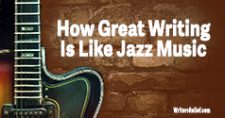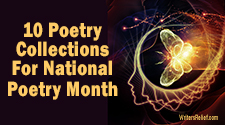A writer who spins taut thrillers featuring a hard-boiled detective could be just as interested in writing about kid detectives and the case of the missing school trophy. And an author who writes children’s books about forest animal friends and their adventures might secretly wish to write a bodice-ripping romance with a swooning heroine. But how do you successfully switch genres? Is the querying process different when trying to get a children’s book or an adult novel published? At Writer’s Relief, we know that in many ways the processes are similar—but there are important differences too.
Publishing Work For Children Or Adults: Key Similarities And Differences
Differences In The Writing Process
Distinctly different audiences. The tone and voice of your work will be totally different depending on your intended audience (which may seem obvious!). A first-grade child will have a more limited vocabulary and frame of reference than a fifty-year-old adult. There are reference books available to help you write using the best vocabulary for your market. And there are differences between closer age ranges too—books for teenagers will differ in style from books for adults, though the distinctions may seem subtle at first. Young adult novels tend to focus more on coming-of-age arcs and characters’ introspection and growth, whereas adult novels tend to focus more on the story. It’s also more common to see first-person narration in children’s fiction, while third-person narration is the norm in adult fiction.
Word count. The length of your book will depend on whether you’re writing for children or adults—though young adult books can be similar in length to adult books (especially if you’re writing genre fiction like historical or fantasy), a middle grade novel or picture book will differ in length significantly. Adult novels tend to range between 50,000 and 125,000 words. Young adult novels will have word counts from 50,000 to 110,000 words. Middle grade novels tend to be 30,000 to 70,000 words long. And picture books are much shorter—a few hundred words to about a thousand maximum!
Similarities In The Writing Process
Research, research, research! Whether you’re writing a contemporary tale for young adults, a childhood memoir, a romance for adults, a biography, historical fiction, fantasy, or any other genre or for any age range, one key element will remain the same: You’ll need to do your research. And an important part of research is to…
Read, read, read! One of the biggest secrets to being a good writer is to be a good reader. No matter what age range you’re writing for, read voraciously—from classics to new releases. You can never have too many influences! Just be sure to read works in the same genre and age range as you want to write in. Of course, reading in general helps you become a better writer, but focusing on books written in your chosen genre will teach you the tricks of the trade while helping you find your own style. Ideally, you want your book to fit in with what’s being published in your age range and genre, while still having qualities that are uniquely yours.
Finding The Right Literary Agent For Your New Genre
Querying Literary Agents: What’s Different
You need an agent who specializes in the age range you’re writing for. The majority of literary agents choose to specialize in books for children or adults—not both! Be aware of agents’ specialties when making your queries. You don’t want to submit your picture book to an agent who only works with young adult or adult writing. Likewise, be sure you’re not submitting your erotic adult romance novel to an agent who specializes in books for young children (yikes!).
Children’s works can be illustrated! Though children’s book illustrators often need a totally different kind of agent for their artwork, children’s literary agents are often open to seeing the author’s illustrations with their books. This is most common for picture books, but illustrated middle grade novels and graphic novels for older readers are becoming more and more popular too. And if you are submitting artwork to a literary agent…
Some children’s agents will allow attachments. Literary agents generally don’t allow you to use attachments in your submission emails, preferring instead that you paste the text of your query letter, synopsis, and/or sample pages directly into the body of your email. This is a widespread rule in the publishing industry—it’s much easier for agents to protect their computers against viruses when they don’t have to open potentially dangerous attachments. Some children’s literary agents will make an exception to this rule, however, if you’re submitting artwork. Be sure to check the submission guidelines.
Querying Literary Agents: What’s Similar
Query letter anatomy will stay the same. Regardless of the age range of your audience, you’ll likely use the same materials to query literary agents: a query letter, synopsis of your manuscript, and sample pages from the manuscript itself. And both children’s and adults’ literary agents will require the same components in your query letter: genre, word count, summary, and your author bio. No matter what age range your book is written for, agents want the same snapshot of it.
Know the agent’s genre preferences. “Children’s literature” is a huge umbrella—in fact, a lot of writers don’t realize that everything from the youngest of board books to the most mature of YA books falls into the “children’s literature” category. But a literary agent who specializes in children’s books doesn’t necessarily accept all genres and age ranges within children’s works. There are so many different types of children’s books—nonfiction versus fiction; memoirs versus educational nonfiction; different age ranges for board books, picture books, chapter books, middle grade, and young adult…and then there are different genres like historical, fantasy, romance, and thrillers within those age ranges! Just as you would research very specific genre preferences of an agent for your adult works, be sure to do the same for your children’s books.
Follow the agent’s formatting guidelines. Whether he or she handles children’s books or adult works, every agent has his or her own formatting preferences for submissions. For example, a children’s book literary agent may want the whole text of your picture book, but only the first three chapters of your young adult novel. Different children’s book agents will also have their own specific formatting guidelines, such as preferred fonts, spacing, and indentations. It’s important, so we’ll say it again…always read submission guidelines!
Can YOU Write Books For Both Children And Adults?
While there are many differences you should take into account when switching age ranges in your writing (and in submitting to literary agents too!), there are many more similarities between genres and age ranges than you might immediately realize—so switching genres may be easier than you think!
QUESTION: Have you ever tried to switch genres? What differences or similarities did you notice?





















0 Comments